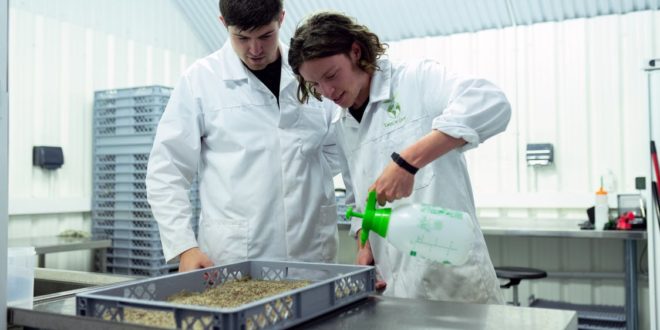Sustainability concepts are making an impact on research institutions. Not only does it lead to cost-cutting measures but sustainability can help minimize the impact that research projects have on the environment.
As companies and organizations spend more on research and development each year, it has become even more crucial for research teams to embrace the need for better energy efficiency, waste management, and carbon footprint reduction.
Let’s look at five essential ways to make your research operations environmentally sustainable:
-
Conserve energy through adequate ventilation
Laboratories used for bio-medical research consume large amounts of energy. This is because research teams in this field employ a number of machines and tools for sterilizing, heating, freezing, and other applications.
There is also the presence of computers, generators, and lighting. These are standard in a typical lab facility but they also cause high amounts of energy consumption.
One way to solve this without compromising safety and health standards is reducing energy consumption. This is possible by adding insulation using the right R-values to reduce air leakage.
Another option is to include overhangs that will maximize the entry of natural light and reduce the usage of fluorescent lighting. These options may not cause a dramatic decrease in energy consumption, but their impact over time is definitely worth considering.
-
Use of solar and alternative energy sources
The design of the laboratory provides an important starting point. From there, institutions may also look towards alternative energy for powering lab equipment.
To begin, laboratories may consider installing solar panels. Though these may not provide 100% of the power supply required by research facilities, solar panels can help energize equipment that consumes less power.
It’s also possible to switch to green energy providers as an alternative to fossil fuel electric companies. If you are in states such as Texas and Oregon, it won’t be difficult to find energy providers that specialize in renewables.
-
Look for sustainable equipment vendors
How many of your tools are made from plastic and non-organic materials? Creating an eco-friendly research facility should start with knowing where to purchase lab equipment. If sustainability is your goal, then you might as well look for vendors that sell green products.
Partnering with such suppliers may cost more, but it gives you the advantage of better waste reduction, less water used for cleaning, and less exposure to hazardous materials.
-
Enforce new lab policies
At the end of the day, sustainability is maintained only when everyone complies. Simple things such as turning off the lights if you are the last one leaving and finding laboratory equipment at auctions can help reduce cost and add to your green credentials.
As you develop an eco-friendly lab culture, include policies for checking the condition of tools and resolving waste management issues. By setting such rules, you can maximize the gains you get from the green technology that you already have.
Sustainability is the future of lab work. As R&D budgets grow, institutions are also becoming more aware of their carbon footprint. So, don’t get left behind. Start embracing sustainability using the tips above.



